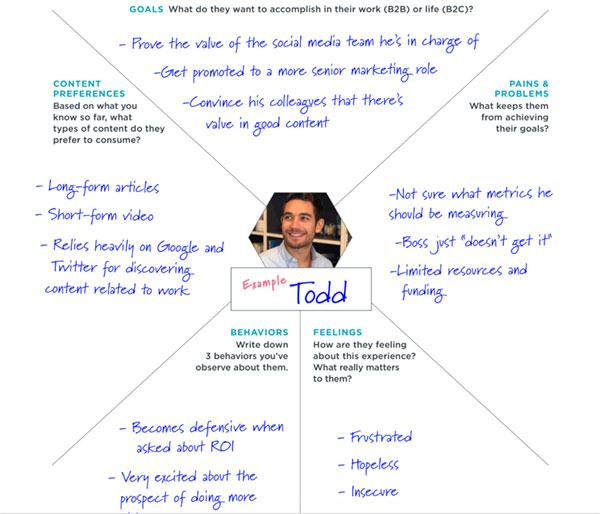Content Marketing
Empathy Mapping: The Secret Ingredient of Content Strategy You Can’t Overlook
Even though I went to college for creative writing, I love data. In night school, I’d pore over the Football Insider’s Almanac—a bible for football nerds thicker than War and Peace—to inform the $20 bets I’d make on a sketchy offshore betting site. FiveThirtyEight has been on my bookmarks for a decade, even as Nate Silver has become increasingly insufferable on Twitter. Calculus killed me, but AP Stat was like a playground.
As a content strategist, I’ve witnessed our clients become increasingly obsessed with data. I helped as best I could as teammates way smarter than me built Storybook, our proprietary content strategy analytics tool. I loved how the data we pulled gave people confidence and certainty. I loved how we could take the guesswork out of what topics, formats, and channels their audience liked best, and show them where they could stand out from the competition.
But as we head towards 2020, I worry that marketers are starting to rely too much on data. At industry conference after industry conference, I fail to hear anyone talk about one of the most fundamental aspects of marketing: talking to your customers.
The art of empathy
Over the past few months, I’ve been working in an Innovation Accelerator at Contently. It’s sort of a small startup within a startup, tasked with testing our assumptions and developing new solutions to our clients’ pain.
The first step in the Accelerator was to do empathy interviews with dozens of clients and prospects. Our job wasn’t to sell them anything. Just to feel their pain.
I’ve spoken with close to a hundred clients over the past couple years, and doubted that I’d learn anything new.
I was wrong.
For the first time, I spoke to them without an agenda. I wasn’t trying to subtly influence a purchase decision or create their content strategy. I was just listening in an open and empathetic way. Hearing about the silos they couldn’t break down; their confusion over what metrics matter; the lack of transparency that dragged the content creation process to a standstill.
As Contently’s new Head of Marketing, these interviews were the greatest gift I could have gotten. I had two dozen spreadsheets on my computer that told me who our clients were. But these conversations told me how they feel. And suddenly everything—our messaging, positioning, content strategy—became so much clearer.
A few weeks ago, we released an interactive content strategy course at Contently. It’s part of our broader mission to help our clients and prospects escape marketing hell. Each module has four lessons and weekly exercises to do with your team. My favorite exercise in the bundle is an audience empathy map.
(Yes, I’m Todd in this example. It’ll all make much more sense when you watch the videos.)
Creating an empathy map is one of the most valuable exercises you can do with your team; it’s a hour-long initiative that will pay incredible dividends. (Although I’d recommend doing some empathy interviews first.)
To get the full bundle of audience analysis worksheets, plus some handy content strategy frameworks and templates, sign up for the course here. (It’s free!) An empathy map won’t replace all of that beautiful data you have about your customers. It’ll just help you see it in a totally new light.
Get better at your job right now.
Read our monthly newsletter to master content marketing. It’s made for marketers, creators, and everyone in between.





